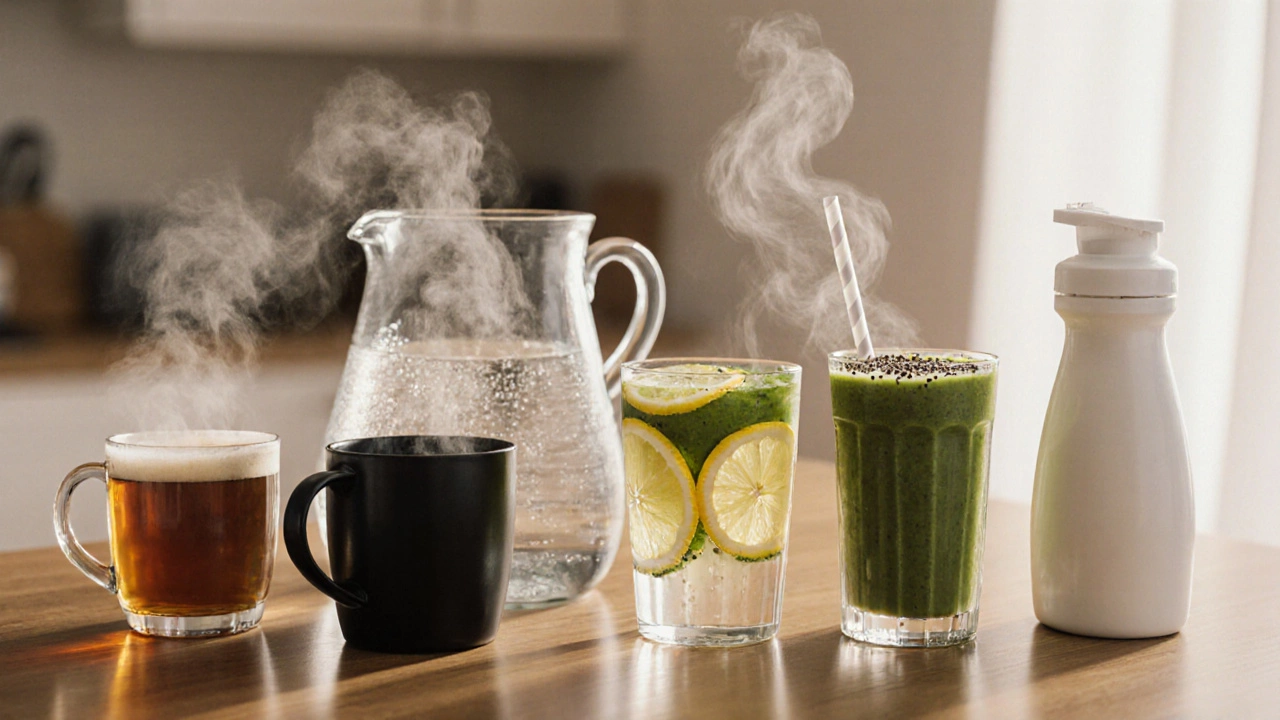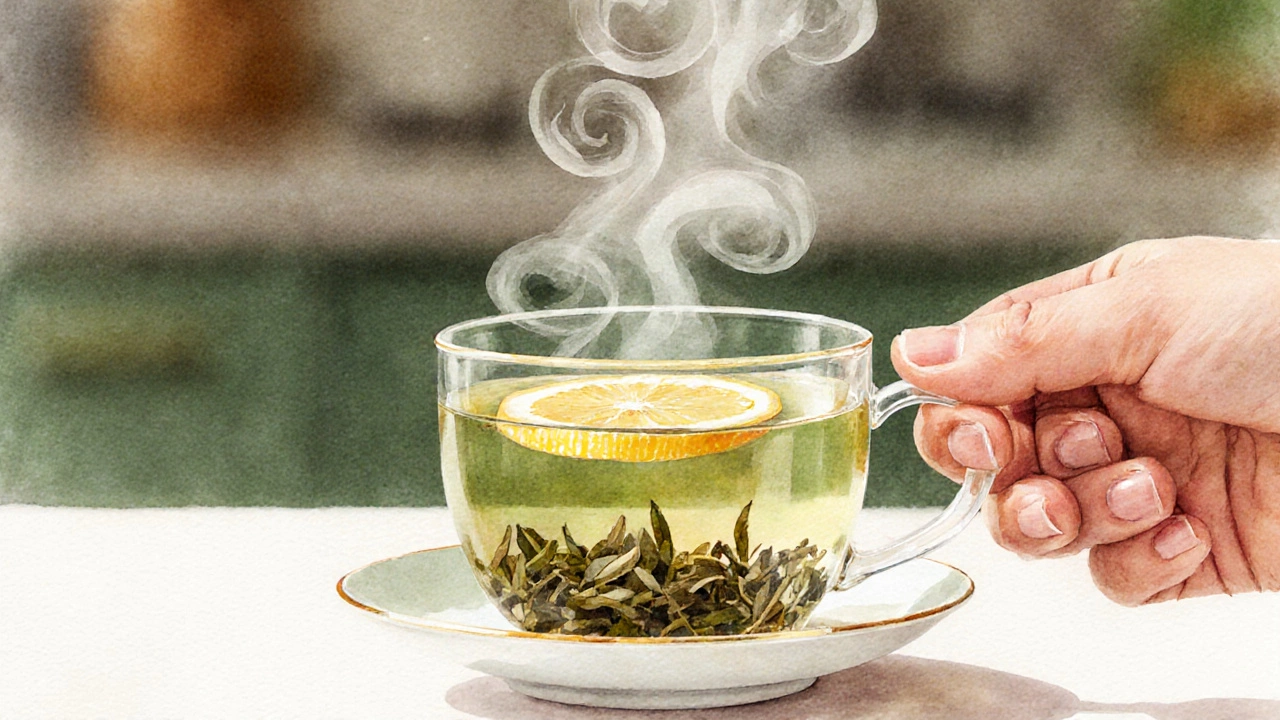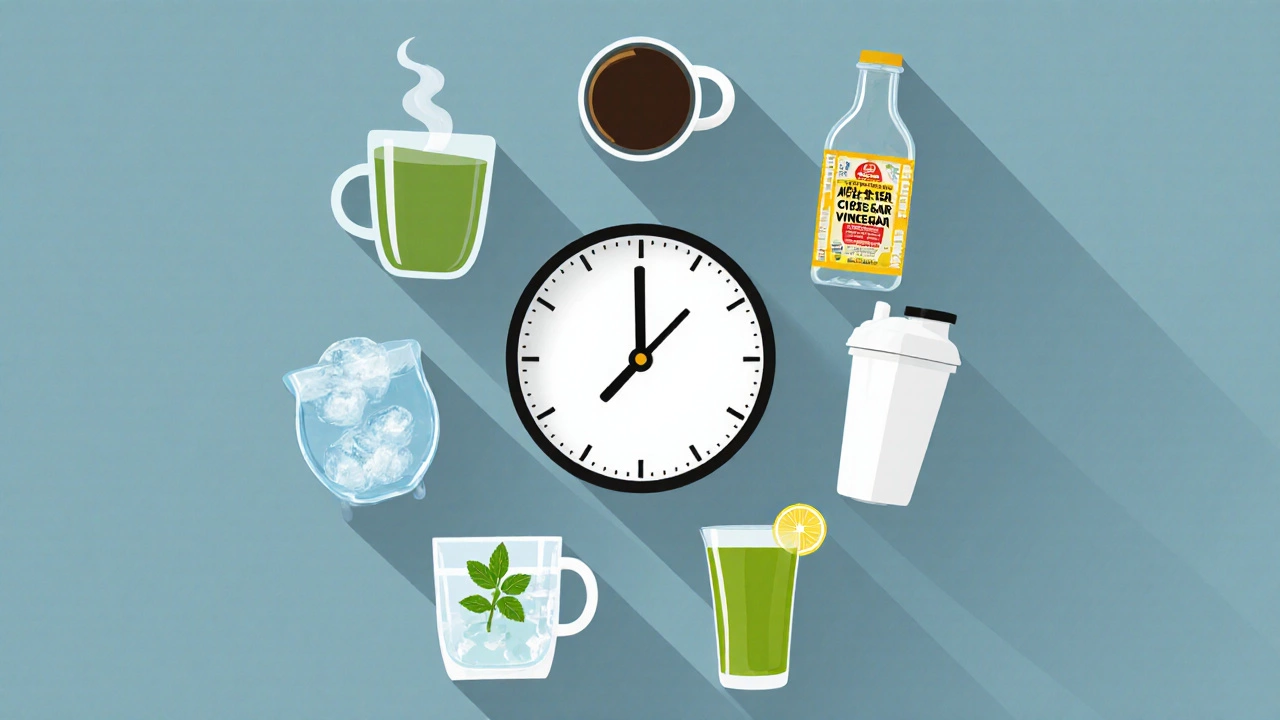
See how your beverage choices affect your daily calorie intake. All drinks in this calculator are based on the article's recommended weight loss beverages.
This helps you track your calorie intake from weight loss beverages
When it comes to shedding pounds, what you sip can be just as powerful as what you eat. Below is a deep dive into the top drinks for weight loss that actually move the needle, plus how to fit them into a busy life.
Drinks for weight loss are beverages that promote calorie deficit, boost metabolism, and increase satiety, helping the body burn fat more efficiently.Calories come from liquids too, and many popular drinks hide sugar, cream, or alcohol that can add up fast. Swapping those for low‑calorie, metabolism‑friendly options does three things:
Each of these drinks brings a unique benefit. Below is a quick snapshot, followed by a deeper look at how to make them work for you.
| Drink | Calories (per 250ml) | Metabolism boost | Satiety aid | Best time to enjoy |
|---|---|---|---|---|
| Green tea | 2 | High (catechins increase fat oxidation) | Medium | Morning or pre‑workout |
| Black coffee | 2 | High (caffeine raises resting metabolic rate) | Low | Morning or early afternoon |
| Apple cider vinegar drink | 5 | Medium (acetic acid improves insulin sensitivity) | High (acidic taste slows stomach emptying) | Before meals |
| Water with lemon | 3 | Low | High (fills the stomach) | Anytime, especially after waking |
| Vegetable smoothie | 80 | Low | High (fiber and protein keep you full) | Breakfast or post‑workout |
| Protein shake | 120 | Low | Very high (protein drives satiety) | Post‑exercise or as a snack |
| Herbal tea (e.g., peppermint) | 0 | Low | Medium (warm liquid reduces cravings) | Evening to curb late‑night snacking |
Green tea is a lightly oxidized tea rich in catechins, especially EGCG, that have been shown to increase fat oxidation during moderate exercise. A 2023 meta‑analysis of 15 trials found an average 3‑4% greater weight loss when participants drank 2-3 cups daily compared with water.
How to drink it:
Black coffee is a brewed beverage containing caffeine that can raise resting metabolic rate by 3‑11% for up to three hours. The key is to keep it black; dairy, sugar, or flavored syrups can add 20‑100calories per serving.
Tips for maximum benefit:
Apple cider vinegar drink is a diluted solution of acetic acid that improves insulin sensitivity and slows gastric emptying, leading to reduced hunger spikes. A 2022 study showed participants who took 15ml of ACV before meals ate 8% fewer calories over 12 weeks.
Simple recipe:

Staying well‑hydrated is often overlooked in weight‑loss plans. Water with lemon is plain water flavored with fresh lemon juice, providing a mild boost of vitaminC and a pleasant taste that encourages higher fluid intake. Drinking 2‑3liters a day can raise the number of calories burned by about 0.5%.
Best practice:
Vegetable smoothie is a blended drink made primarily from low‑calorie vegetables, a small amount of fruit, and optional protein powder, delivering fiber, vitamins, and a feeling of fullness. Because the fiber is liquid‑bound, it passes through the stomach slower than juice, helping curb cravings.
Quick green smoothie recipe (≈250ml):
Blend until smooth and enjoy as a breakfast replacement or after a cardio session.
Protein shake is a liquid source of high‑quality protein, typically whey or plant‑based, that supports muscle retention during calorie restriction. Preserving lean mass keeps basal metabolic rate higher, making overall fat loss easier.
How to keep it low‑calorie:
Herbal tea (such as peppermint, chamomile, or ginger) is a caffeine‑free infusion that can reduce stress‑induced cravings and supply antioxidants. Because it’s warm and fragrant, it often replaces the habit of reaching for a sugary drink.
Suggested uses:

Here’s a sample day that blends the seven drinks without overwhelming your palate:
This routine supplies roughly 1,200ml of calorie‑free or low‑calorie fluids, keeps you hydrated, and leverages each drink’s unique weight‑loss benefit.
Yes, as long as the total caffeine stays under your personal tolerance (usually 300‑400mg per day). Mixing them can give you a varied flavor while still delivering the metabolism‑boosting benefits.
For most adults, 1‑2tablespoons diluted in water is safe. Use a straw to protect tooth enamel, and don’t exceed 2weeks of continuous use without a break if you notice stomach irritation.
Water can aid weight loss by boosting metabolism slightly and reducing false hunger signals, but it must be combined with a balanced diet and activity. Expect modest effects, not dramatic drops.
A well‑formulated veggie‑protein smoothie can serve as a convenient meal replacement, but it should include protein, healthy fats, and fiber to keep you full and preserve muscle.
First thing in the morning, on an empty stomach, is popular because it jump‑starts hydration and can aid digestion throughout the day.
Pick two or three of the drinks above, add them to your daily routine, and watch your appetite, energy, and scale numbers shift in the right direction. Remember, the real power lies in consistency-not a single magic beverage.